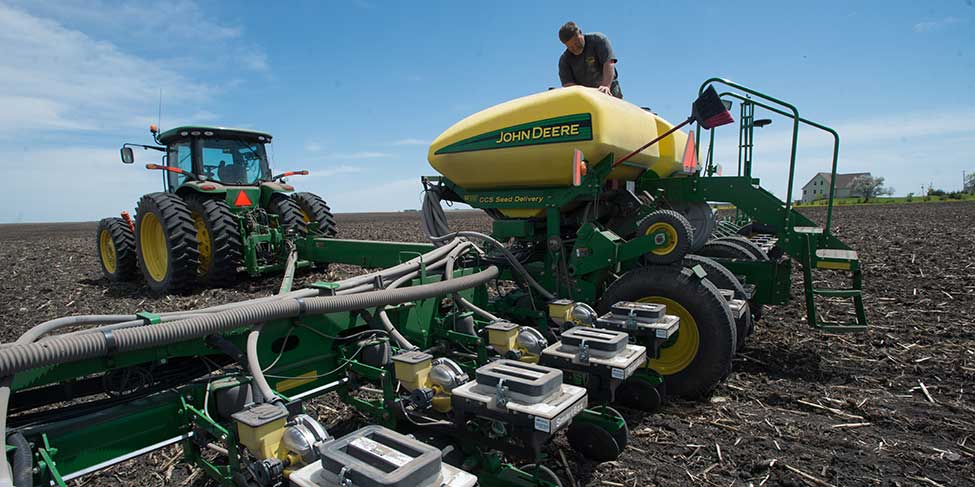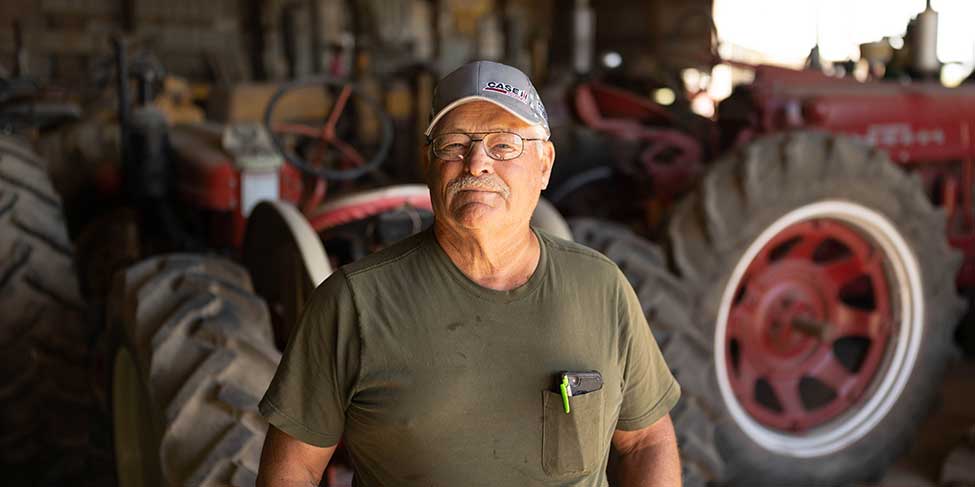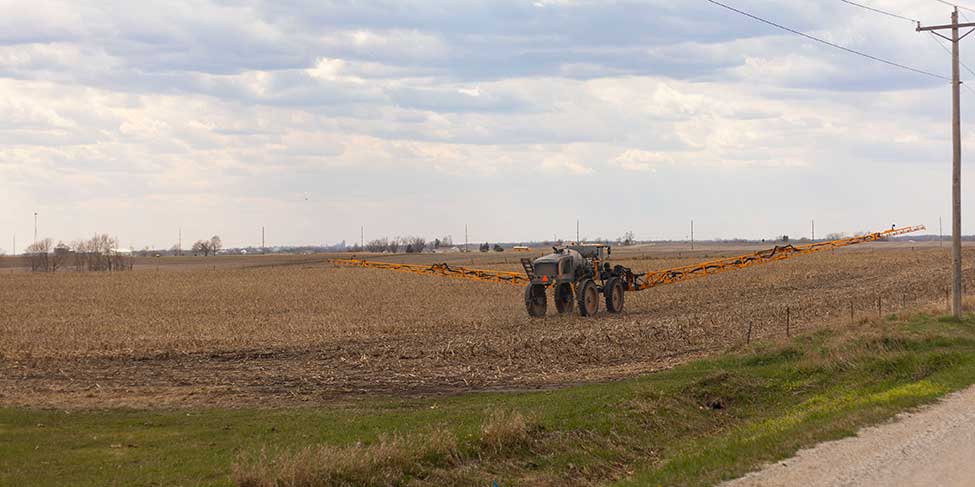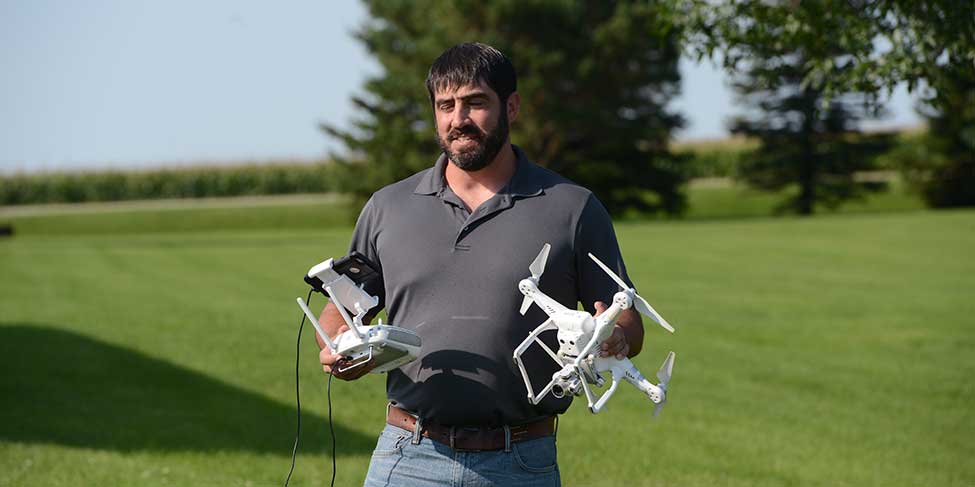I Spy: Spring Planting Edition
May 14, 2024
By Brock Johnston, Iowa Soybean Association
It’s officially grow time across millions of corn and soybean acres as farmers throughout Iowa continue to plant their next crop. And while the process can be over in the blink of an eye, the sheer size and unique characteristics of modern planting equipment dashing through a field can be hard to miss!
Iowa farmers utilize various equipment for planting common row crops like corn and soybeans. Much like the tools we use in our backyard gardens, modern agricultural equipment helps to ensure a farmer’s crop has everything it needs to survive and thrive throughout the summer months.
Let’s explore some key tools they rely on to sustainably grow a productive, profitable crop.
 Tractors
Tractors
Modern tractors play a crucial role in planting. Farmers use tractors to pull planters through the fields. These planters are equipped with containers for seeds, and as the tractor moves across the field, it drops the seeds precisely where needed. The farmer controls the entire process from inside the tractor.
The first tractors were basic and had limited functionality. However, as technology improved, so did the tractors used by farmers. These machines became more complex, with features like hydraulics, power steering, automatic transmissions and more. Many tractor models available on the market today outweigh their 100-year-old predecessors by thousands of pounds.
100 Years of Tractor Evolution
For Warren Bachman, who grows corn and soybeans in rural Clarke County, more than 60 years of involvement in the agriculture industry has allowed him to witness the transformation of farm technology.
“As a freshman in high school, I planted and harvested my first crop,” says Bachman. “It’s safe to say some of my first pieces of machinery look a lot different than what people see today in the field.”
Bachman also believes he has operated hundreds of pieces of equipment over his career, including numerous tractors, planters and more than 50 combines used to harvest crops in the fall. Today, his hobby collection of antique tractors easily exceeds 90.
“The amazing thing is you can really see how the individual tractor components have changed in size and shape over the years just by looking at the collection,” says Bachman. “Everything from the tires to the steering wheel has changed. But the biggest differences would be in the added technology and inside the tractor cab itself.”
 Planters and Grain Drills
Planters and Grain Drills
Once the soil is prepared, farmers use a planter or a grain drill to place the seeds precisely. Both pieces of machinery are pulled by a tractor and ultimately serve the same purpose — creating evenly spaced rows and embedding seeds into the soil at a precise depth and spacing. This ensures each plant has the room it needs to grow. Planters are commonly used for larger plants like soybeans and corn that require greater row spacing for cultivation. While grain drills can perform the same function, they are also commonly used to disperse seeds in and between rows like winter wheat, oats and more.
GPS Systems and Monitors
Did you know there’s more technology in today’s tractor cabs than on the first space shuttle to the moon? While farmers prefer to keep their equipment here on Earth, GPS technology — and the vast network of satellites that power it — are quickly becoming an essential tool in modern farming. Today, many farmers use monitors and GPS technologies to help plant straight rows of crops and prevent seeds from overlapping, ensuring efficient and accurate planting. These systems can also map field boundaries, targeting the treatment of weeds and crop diseases and more.
Seed Tenders
Seed tenders play an essential role in keeping the planting season moving efficiently. These specialized machines are designed to move bulk quantities of seed to the field, providing a steady seed supply for the planter. When the planter needs to be restocked with seed, a tender will resupply each planter box using an auger or conveyor belt system. With a narrow window for planting, minimizing downtime is essential. Seed tenders help achieve that goal and are typically pulled behind a truck.
 Sprayers
Sprayers
While sprayers were once rare, today, they have become an essential piece of farm equipment in modern crop production. By properly applying herbicides, pesticides and fertilizers, sprayers give crops the best chance for survival against pests, diseases and weeds. Agricultural sprayers are typically self-propelled, tractor-mounted or aerial and can be used either before or after planting.
Drones
One of the latest advancements in farm technology is the emergence of agriculture drones. Today, some farmers will use drones to serve many purposes, including (but not limited to):
• Crop monitoring: Drones equipped with cameras and sensors can monitor crop health, detect diseases and assess plant growth.
• Mapping and surveying: Creating accurate maps of fields, helping farmers analyze soil variations and moisture levels.
• Spraying: Drones can be used to precisely deliver fungicide and other applications to crops (typically in late summer) reducing waste and environmental impact.
Farmers have relied on advancements in ag technology for centuries. While the size and shape of modern farm equipment has dramatically changed over the years, their purpose remains the same — to assist farmers in efficiently producing crops, making informed decisions and maintaining productive land. Look for which pieces of equipment you can spot on your next road trip!
